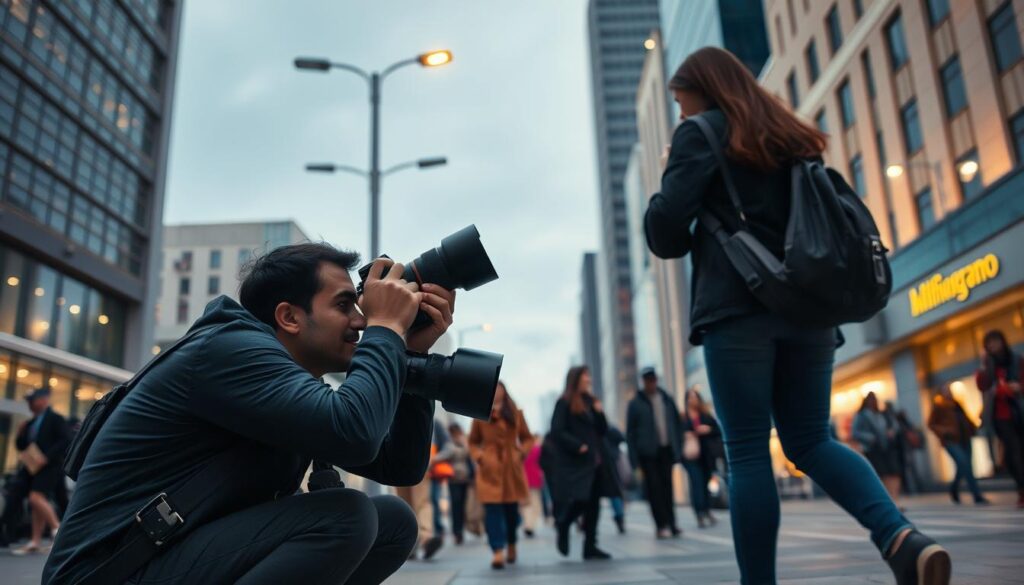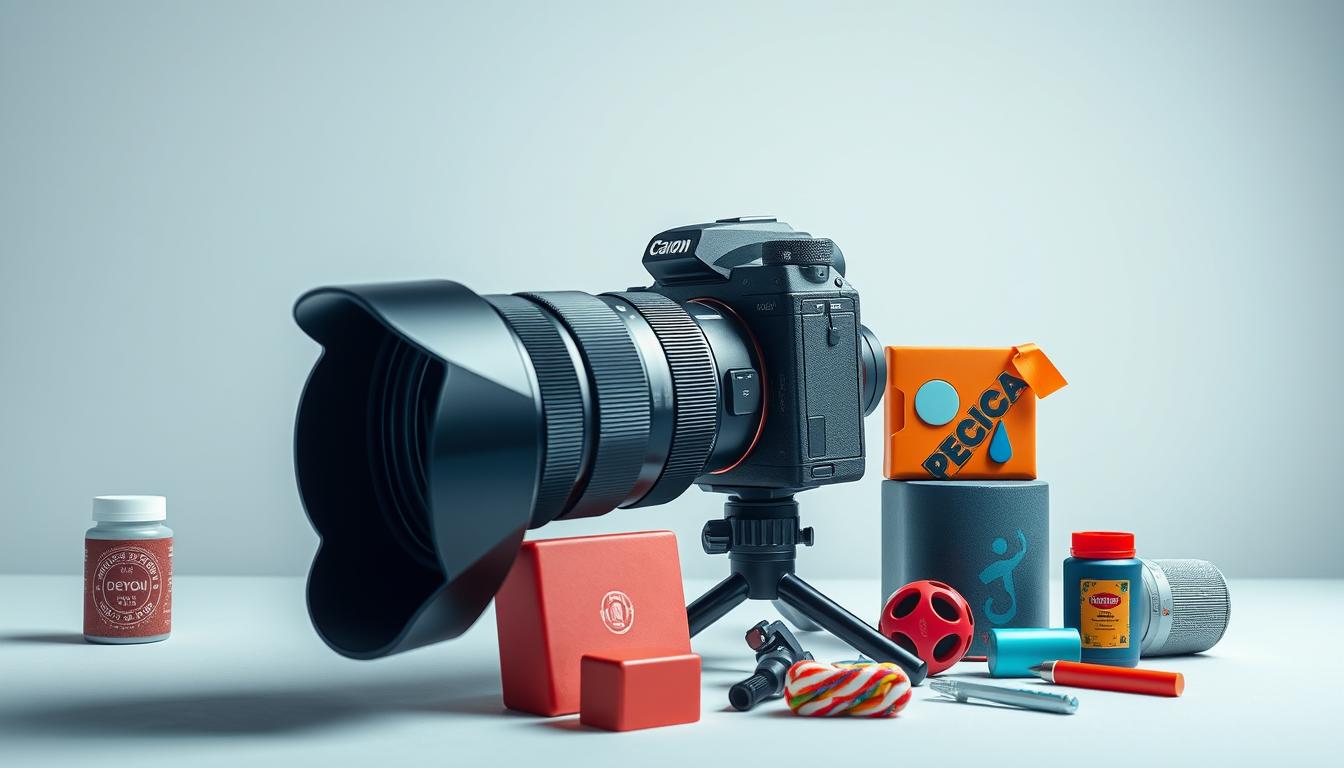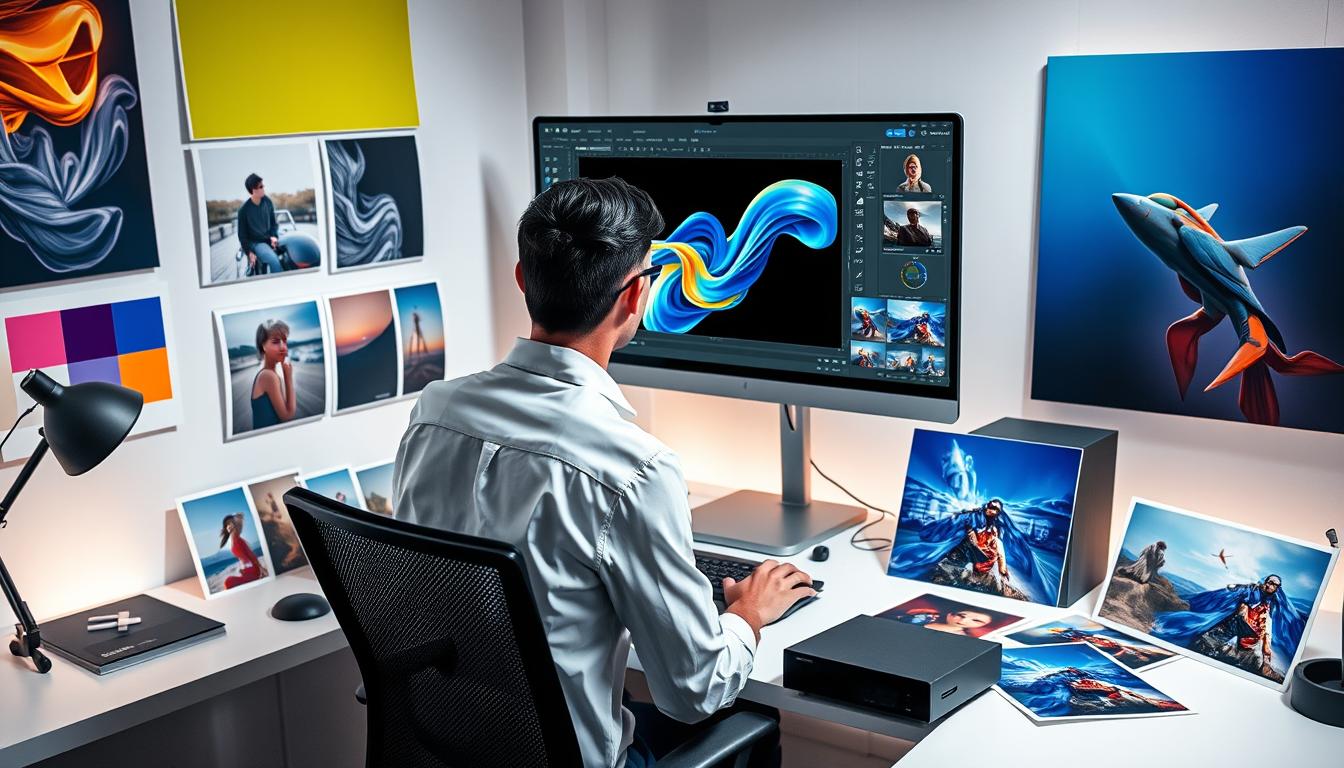Photography is now key in many assessment areas. It’s a special way to document and gather evidence. This method helps us understand things better by collecting and analyzing data.
Photography lets us keep a lasting record of things. This record helps us see how things are changing. It also shows where we need to get better and helps us make smart choices.
Photography makes assessments better and more detailed. It’s all about capturing and keeping visual information. This information supports our findings and makes our assessments more reliable.
Photography is used in many areas like education, research, and healthcare. It helps us gather and study data in a unique way. By learning how to use photography in assessments, we can make our strategies more effective.
Introduction to Photographic Assessment
Photography is now a must-have in assessments. It helps us collect and analyze visual data. This makes our assessment results more valid and reliable.
As technology grows, photography’s role in assessments will too. It will open up new ways for us to come up with creative assessment strategies.
Understanding the Role of Photography in Assessment
Photography is key in assessments, mainly in education. Assessment photography equipment is now more common. It helps document and check how well students learn. In photography in education, it helps see how students are doing, find what they need to work on, and give them feedback.
Some big pluses of using photography in assessments are:
- Enhanced visual documentation
- Improved evaluation of student learning
- Increased student engagement and participation
When using photography in assessments, it’s important to follow some key rules. These include using the right lighting, camera settings, and image quality. By doing this, teachers can make sure their assessments are fair, reliable, and valid.
Studies show that photography in education can really help students learn better. For instance, a study by the National Center for Education Statistics found that students who used photography in their learning did much better in thinking and solving problems.
In short, photography is very important in assessments, mainly in education. By knowing the basics of assessment photography and using photography in education well, teachers can make learning more fun and effective for their students.
| Benefits of Photography in Assessments | Description |
|---|---|
| Enhanced Visual Documentation | Photography gives a visual record of student learning, making it easier to check and track progress. |
| Improved Evaluation of Student Learning | Photography lets educators check student learning in a more detailed and accurate way. |
| Increased Student Engagement and Participation | Photography can make students more involved and active in learning, leading to better results. |
Essential Photography Equipment for Assessment Purposes
For photography for research, the right gear is key. The camera, lenses, and accessories you choose greatly affect the quality of your photos. It’s vital to pick equipment that fits your project’s needs.
Important tools include high-resolution cameras, tripods, and digital photography tools like photo editing software. The equipment you need depends on the project’s details and where you’ll be taking photos.
Here are some things to think about when picking photography equipment for assessments:
- Type of camera: DSLR, mirrorless, or smartphone camera
- Resolution: high-resolution for detailed images
- Lenses: wide-angle, macro, or telephoto lenses
- Accessories: tripods, flash, and photo editing software
It’s not just about the equipment. You also need to know how to use it well. This might mean learning photography for research techniques and getting familiar with digital photography tools like photo editing software.
How Photography Can Be Used for an Assessment: A Comprehensive Guide
Photography is a great tool in assessments. It gives us photographic evidence to help make decisions. To use photography well, we need clear assessment criteria and a plan for taking and analyzing pictures.
Here’s how to use photography in assessments:
- Start by defining what you want to achieve with your assessment.
- Figure out what important things you need to capture with your camera.
- Make a plan for how you will take and look at the pictures.
By following these steps, you can get valuable photographic evidence. This evidence helps you make better decisions and track progress. It makes assessments more effective and efficient.
Using photography in assessments also means thinking about assessment criteria. You need clear rules for taking and judging pictures. Photography can make assessments more reliable and accurate. This leads to better decisions.
Technical Considerations for Assessment Photography
When taking photos for assessments, technical considerations are key. They help make sure the photos are of top quality and meet their purpose. This means understanding the need for good lighting, adjusting camera settings, and following image quality standards. By focusing on these details, photographers can avoid mistakes and make their photos more useful.
To get great photos, photographers need to think about a few important things:
- Lighting requirements: Making sure the subject is well-lit and the lighting is even.
- Camera settings optimization: Changing camera settings like aperture, shutter speed, and ISO to get the best shot.
- Image quality standards: Following rules for image quality, like resolution and compression.
By keeping these technical considerations in mind, photographers can make sure their photos are up to standard. This helps make the assessment process more accurate and reliable.
Implementing Photography in Different Assessment Contexts
Photography is a versatile tool used in many fields. It’s valuable in education, work, and research. It adds depth and breadth to assessments.
Photography is used in various ways, such as:
- Documenting progress in construction projects
- Recording patient progress in medical settings
- Capturing evidence in forensic science
Understanding how to use photography in different areas opens up new ways to document. Effective implementation depends on knowing the specific needs of each field.
Photography’s role in different fields is growing. This opens up new chances for assessment and evaluation. By using photography’s versatility, we can make assessments more complete and accurate.
| Field | Application of Photography |
|---|---|
| Education | Documenting student progress, creating visual aids |
| Medicine | Recording patient progress, capturing medical evidence |
| Forensic Science | Documenting crime scenes, capturing evidence |
Best Practices for Documentary Photography in Assessments
Documentary photography in assessments needs best practices for integrity and reliability. It’s important to keep photography techniques consistent, organize visual data well, and follow ethical considerations. These ensure the privacy and dignity of subjects are respected.
Some key guidelines for ethical considerations in assessment photography include:
- Obtaining informed consent from subjects
- Respecting subjects’ privacy and dignity
- Avoiding manipulation or exploitation of subjects
By following these guidelines and adopting best practices, photographers help make assessments valid and useful. It’s vital to focus on ethical considerations and keep photography techniques consistent. This ensures the visual evidence collected is reliable.

The aim of documentary photography in assessments is to provide accurate and reliable visual evidence. By focusing on best practices and ethical considerations, photographers help achieve this goal. They contribute to the success of the assessments.
| Guideline | Description |
|---|---|
| Maintaining consistency | Using consistent photography techniques to ensure reliability of visual evidence |
| Organizing visual data | Effectively organizing and storing visual data to ensure ease of access and analysis |
| Adhering to ethical considerations | Respecting subjects’ privacy and dignity, and avoiding manipulation or exploitation |
Digital Tools and Software for Photo-Based Assessments
Technology has brought many digital tools to help with photo-based assessments. These tools make the assessment process smoother and more effective. You can find everything from image editing software to platforms for organizing and analyzing visual data.
Key software for photo-based assessments includes tools for managing images, analyzing data, and working together. These tools help people and organizations manage their assessments better. They also help extract important insights and make informed decisions.
Here are a few examples of digital tools used in photo-based assessments:
- Adobe Lightroom for image editing and management
- Google Photos for image storage and organization
- Trello for collaboration and project management
Using these digital tools and software for photo-based assessments can improve your assessment practices. It helps in making better decisions and achieving your goals.
Creating Standardized Photography Protocols
Standardization is key to ensuring consistency and quality in visual documentation. By setting up standardized photography protocols, organizations can make their assessment data more reliable and comparable. This leads to better decision-making. It involves clear photography guidelines, documentation templates, and quality control.
To create effective standardized photography protocols, consider these best practices:
- Define specific photography requirements, including equipment, lighting, and composition
- Develop documentation templates to ensure consistency in recording and storing visual data
- Establish quality control measures to review and verify the accuracy of visual documentation
By using standardized photography protocols and documentation templates, organizations can make their assessment processes better. This reduces errors and improves the quality of visual documentation. This leads to more accurate assessments and better decision-making.
Effective standardized photography protocols also help in collaboration and communication. All parties can rely on consistent and high-quality visual documentation. By focusing on standardization, organizations can make the most of photography in assessments and make better decisions.
| Benefits of Standardized Photography Protocols | Description |
|---|---|
| Improved Consistency | Ensures consistent visual documentation across different assessments and contexts |
| Enhanced Reliability | Supports more accurate assessments and decision-making |
| Increased Efficiency | Streamlines assessment processes and reduces errors |
Analyzing and Interpreting Photographic Evidence
When we look at photos, we need a clear plan to get the most out of them. Interpretation methods are key to understanding what the photos show. They help us see the big picture and make smart choices based on what we see.
To really get into the photos, we must think about a few things. The photo’s quality, where and when it was taken, and why we’re looking at it are all important. 
- Look closely at the photos for any important details or patterns.
- Think about the setting of the photo, like the time, place, and situation.
- Use interpretation methods to grasp the importance of what we see.
By following these steps and using analyzing photographic evidence techniques, we can understand photos better. This helps us make choices that are more accurate and effective.
Good analysis and interpretation of photos need technical skills, careful attention, and a methodical approach. By getting better at these, we can fully use visual evidence and make decisions based on solid facts.
Legal and Privacy Considerations in Assessment Photography
In assessment photography, legal considerations are key to protect individual rights and privacy. This is vital when capturing personal or sensitive information.
Understanding legal and privacy rules in assessment photography is essential. These rules include:
- Getting consent from those photographed
- Following data protection guidelines
- Using secure storage for photos
By focusing on legal considerations and privacy in assessment photography, organizations can avoid legal issues. This ensures their photography practices are both effective and ethical. It protects individuals’ rights and maintains the integrity of assessments.
Legal and privacy matters are critical in using photography for assessments. By addressing these, we can make assessments more transparent and accountable.
Consent Requirements
Getting informed consent is vital in legal considerations for assessment photography. It means people know why and how their photos will be used. They must agree before being photographed.
Data Protection Guidelines
Data protection guidelines are also key to keep photos private and secure. This includes steps to stop unauthorized access or misuse of sensitive data.
Storage and Security Protocols
Lastly, storage and security protocols are important to protect photos. This includes using encrypted files or databases with controlled access. It keeps sensitive info safe.
| Consideration | Guideline |
|---|---|
| Consent Requirements | Obtain informed consent from individuals being photographed |
| Data Protection Guidelines | Implement measures to prevent unauthorized access, use, or disclosure of sensitive information |
| Storage and Security Protocols | Implement secure storage solutions, such as encrypted files or access-controlled databases |
Future Trends in Photographic Assessment Methods
Technology keeps getting better, and future trends in photo assessment are changing how we do things. Cameras, AI, and machine learning are making big leaps. This means we can do more with photos than ever before. Things like drones, 3D scanning, and virtual reality are on the horizon.
These new tools and methods are making assessments better, faster, and more accurate. By keeping up with these changes, we can lead the way in assessment innovation. The benefits include:
- More accurate and consistent results
- Better ways to see and analyze photos
- Less time and money spent on assessments
Looking ahead, innovations in photographic assessment will be key. By using these new tools, we can make assessments more effective and efficient. This will help everyone, from individuals to big organizations. With the right tech, we can achieve great things in many areas.
| Trend | Description | Benefits |
|---|---|---|
| Drones | Using drones for aerial photography and assessment | Improved accuracy, increased efficiency |
| 3D Scanning | Creating detailed 3D models for assessment and analysis | Enhanced visualization, improved accuracy |
| Virtual Reality | Using VR for immersive assessment and training experiences | Increased engagement, improved retention |
Conclusion
Photography is a powerful tool for assessments in many fields. It helps professionals make their evaluations more valid and impactful. It’s great for tracking progress and gathering evidence for decisions.
Photography has many uses, from setting up protocols to using digital tools. Knowing the technical, legal, and ethical sides is key. This ensures photography is used wisely and effectively.
The future of photography in assessments looks bright. New tech and data analysis will make it even more valuable. Staying up-to-date will help everyone use photography to improve their work.
Photography is essential for better assessments. It helps professionals make better decisions and drive change. By learning how to use photography well, we can all grow and excel in our fields.
FAQ
What are the key benefits of using visual documentation in assessments?
Photography is a powerful tool for documenting assessments. It captures detailed evidence that adds depth and validity. It helps track progress, document complex events, and inform better decisions.
What are the essential photography equipment and tools needed for assessment purposes?
Choosing the right photography equipment is key for quality visual documentation. For assessments, pick high-resolution cameras, smartphone apps, and image editing software that fit your project’s needs.
How can photographers ensure consistent and ethical practices in assessment photography?
Following best practices in documentary photography is vital. It ensures the integrity of the visual evidence. This means using consistent techniques, organizing data well, and respecting subjects’ privacy and dignity.
What are the legal and privacy considerations in assessment photography?
Assessment photography raises important legal and privacy issues. These include consent, data protection, and keeping visual data safe. Photographers and organizations must follow laws and guidelines to protect individuals’ rights and privacy.
How can photography be integrated into different assessment contexts?
Photography is versatile and valuable in many assessment settings. It can be used in education, professional, and research environments. By adapting photography to different fields, we can improve our assessments.
What are the future trends and innovations in photographic assessment methods?
The field of photographic assessment is always changing. New trends and technologies are emerging. These include better camera tech, artificial intelligence, and machine learning, promising to improve assessment quality and efficiency.





